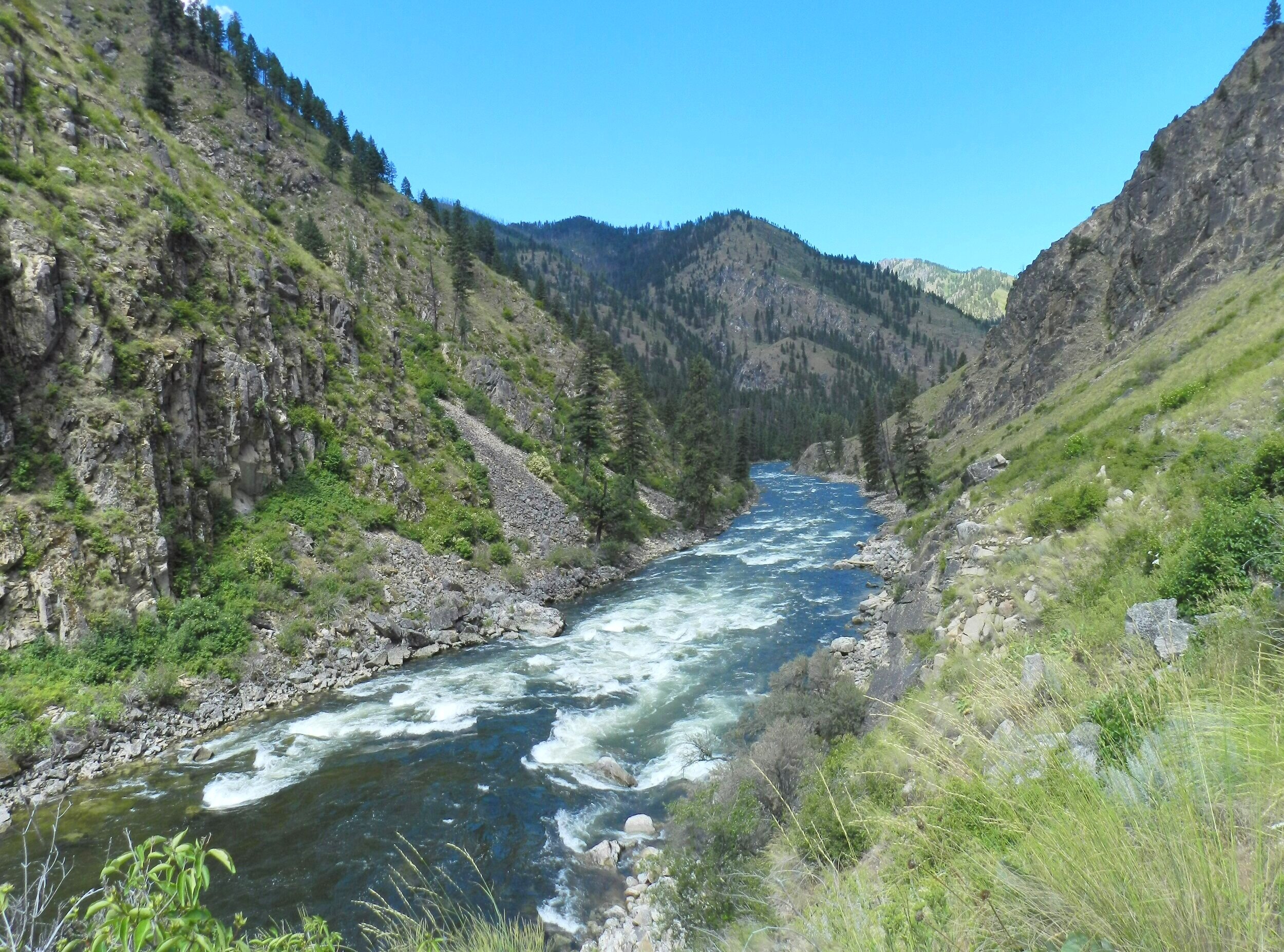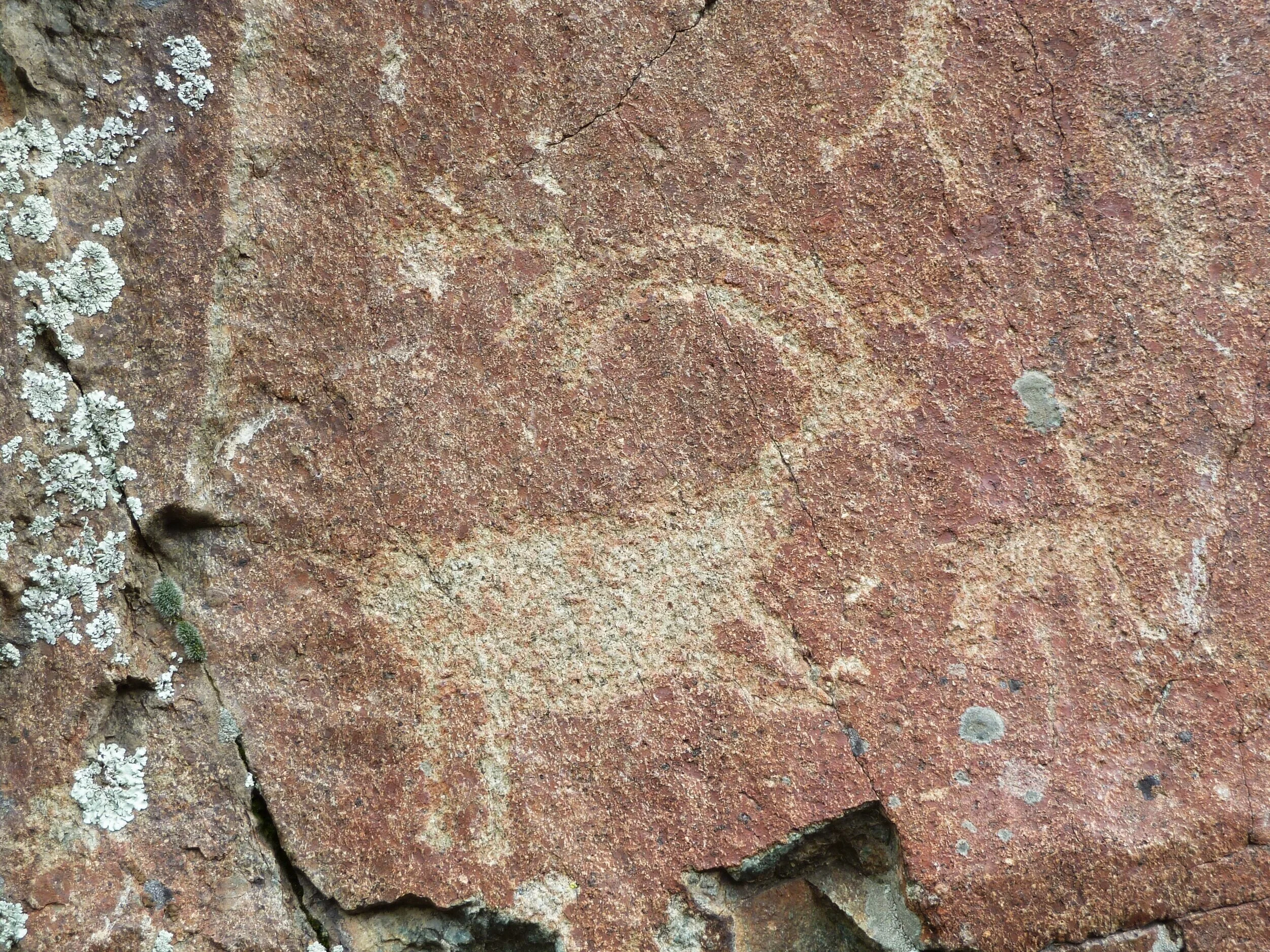
Tin’úun Recovery
Research, management, and policy engagement to recover bighorn sheep within the Nez Perce homeland.
History & Significance
Rocky Mountain bighorn sheep (tin’úun) are culturally significant to the Nimiipuu. Based on archeological evidence and oral histories from Tribal elders, bighorn sheep were one of the primary game animals that sustained the Nez Perce way of life prior to Euro-American settlement. The Salmon River population is of particular importance to the Tribe, as they represent the last native genetic stock within the Tribe’s homeland. Bighorn sheep were used for a large variety of purposes including food, clothing, tools, utensils, and weapons.
Populations began to decline with market hunting in support of Euro-American mining towns, primarily on accessible winter ranges, during the 1860s and 1870s. However, it was the arrival of domestic sheep around 1860 that ultimately led to the collapse of many populations and the complete extirpation of bighorn sheep from what is now Hells Canyon. The first population-level die-off associated with respiratory disease originating from domestic sheep was reported in 1870. By 1910, only a single native population survived at remnant levels in the rugged canyon breaks of the Salmon River further east.
The Salmon River population continues to survive despite periodic die-offs associated with respiratory disease, and reintroduced bighorn sheep within Hells Canyon continue to struggle against persistent infections. The Tribe continues to work towards bighorn sheep restoration in both areas alongside our many federal, state, and conservation partners.
Salmon River Bighorn Sheep Project (2007 - 2015)
The Tribe’s Bighorn Sheep Recovery Project was initiated in 2007 in response to the Chief of the Forest Service’s 2005 appeal decision remanding the Payette National Forest (PNF)’s 2003 Land and Resource Management Plan for amendment to ensure viable bighorn sheep populations across the Forest. In part, the appeal decision recognized continued domestic sheep grazing on the forest would jeopardize bighorn sheep viability due to the risk of contact with and subsequent disease transmission to bighorn sheep. In response to this appeal decision, the PNF completed a risk analysis of disease transmission between domestic and bighorn sheep on the PNF. This analysis identified a lack of data on the distribution and movements of bighorn sheep relative to domestic sheep allotment boundaries within the Salmon River canyon as a key factor hindering that and future analyses.
The Salmon River Bighorn Sheep Project area includes a 75-mile portion of the Salmon River drainage in Idaho from the town of Riggins, ID upstream to the confluence of Big Mallard Creek. Major tributaries within the Project area include the lower portions of the Little Salmon and South Fork Salmon Rives. Core bighorn sheep habitat is contiguous throughout all river and tributary corridors within the project area, and substantial bighorn sheep habitat is also found along higher elevation mountain ranges. Bighorn sheep are found throughout the project area in a single population of identifiable and interacting ram and ewe social groups. This project tracked 82 radio-collared rams and ewes from the air, ground, and via satellites to assess movements and distribution; adult survival; lamb production, survival, and recruitment; population size and trend; and animal health. Cooperators included Idaho Department of Fish and Game, Nez Perce-Clearwater NF, Payette NF, and Bureau of Land Management.
The Project identified five female and four male social groups within this population, with high connectivity due primarily (but not exclusively) to male movements during the rut. Summer lamb survival and recruitment were low but generally increasing, contributing to a 12% annual increase in population counts during the period of this study. Health sampling, demographic patterns, and field observations suggested respiratory pneumonia, manifested primarily through lamb mortality, is likely a chronic condition in this population. Given evidence of chronic pneumonia and low lamb survival and recruitment, continued monitoring of this population is warranted to determine if apparent increasing population performance results in continued recovery.


